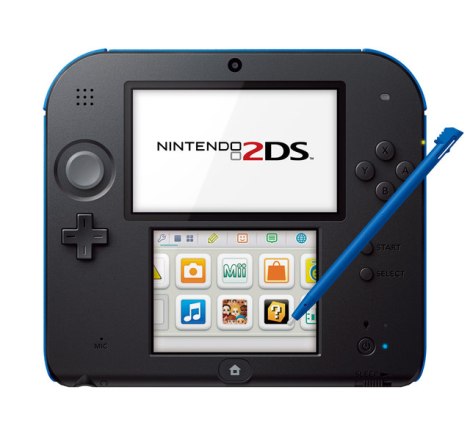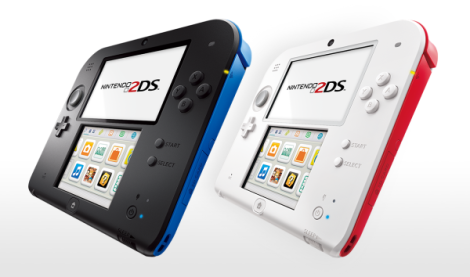[youtube=http://www.youtube.com/watch?v=sAExBTWIp3M&w=420&h=315]
I have one word for you, Nintendo, that summarizes my reaction to your recent announcement of the 2DS: “Why.”
Of course, this single word is quickly followed by several questions such as, “Why did this idea receive corporate approval?,” “Why are you tripping over your own feet if you aren’t Microsoft?,” and most importantly, “Why doesn’t it fold?” Unlike its competitors, Nintendo is the risk-taker, the company that comes up with the crazy ideas and then sticks by them. Sometimes these ideas work, and sometimes (as any risk-taker will tell you) they don’t. The Gamecube made obvious what complacency can do to sales, whereas the innovative Wii exceeded both public and corporate expectations. It’s not the 2DS that scares me, it’s what the 2DS represents, and that is an insecure Nintendo.

By its title alone it is apparent that the 2DS is a step backward. It seems like the admission of a mistake, a concession to the parents who believe their child’s developing eyesight will be ruined by 3D (a claim that has been refuted by optometrists), or to those who think 3D is gimmicky (don’t talk to me if you haven’t played a 3DS seriously for more than ten minutes). Nintendo was even nice enough to make the 3D feature optional via a 3D slider on the side of the screen. But who knows, maybe I’m just a crazy consumerist American for wanting more options rather than fewer.


In all fairness, Nintendo is obviously not doing this for no reason, and that reason seems to be economic. Ditching the clamshell design and the expensive 3D screen allows Nintendo to significantly shave down production costs, while still selling the same software (although it’s more than a bit ironic that the 2DS plays 3DS games). On October 12, the 2DS hits shelves at a reasonable $129.99, quite a drop from the $169.99 of its 3D counterpart. The 2DS is also launched on the same day as the long-awaited Pokémon X and Pokémon Y, which could boost system sales for those who want to play the games but can’t afford the steeper (but honestly not unreasonable) 3DS ticket price.

The announcement video obviously targets children, as well as parents who might not want to invest in an expensive system that Junior might destroy in a week or two. The 2DS design also has the potential to draw in those wary of 3D, and offers a cheap alternative for those who have no interest at all in the 3D feature and don’t wish to pay for it. But while Nintendo might make a quick buck off the 2DS, this does not mean that it will not harm Nintendo’s overall image. After all, every economic decision such as this comes with a non-monetary price tag, and Nintendo might soon find itself in a different kind of debt entirely. You don’t just remove the primary selling point of a product without suffering some serious consequences.
I’ve said this before and I’ll say it again: Nintendo, I sure hope you know what you’re doing.

For one, war among the frontier between Native Indians and
Europeans was constantly engaged. The first accusation of witchcraft didn’t
happen in Salem, Massachusetts, but in Danvers, Massachusetts.
Robert Dykstra, in The Cattle Towns, talks about the cattle trade and their brevity.
For one, war among the frontier between Native Indians and
Europeans was constantly engaged. The first accusation of witchcraft didn’t
happen in Salem, Massachusetts, but in Danvers, Massachusetts.
Robert Dykstra, in The Cattle Towns, talks about the cattle trade and their brevity.